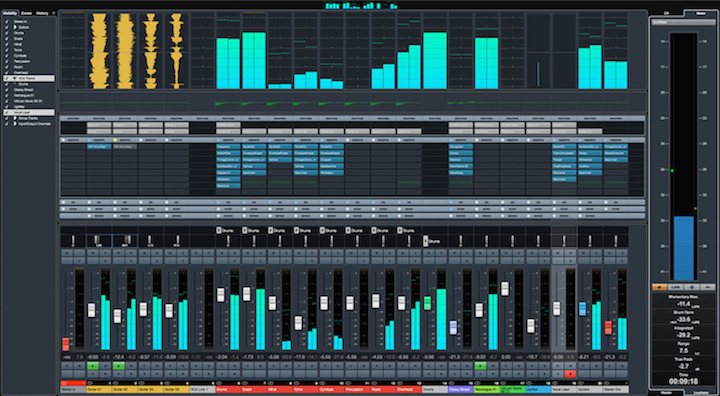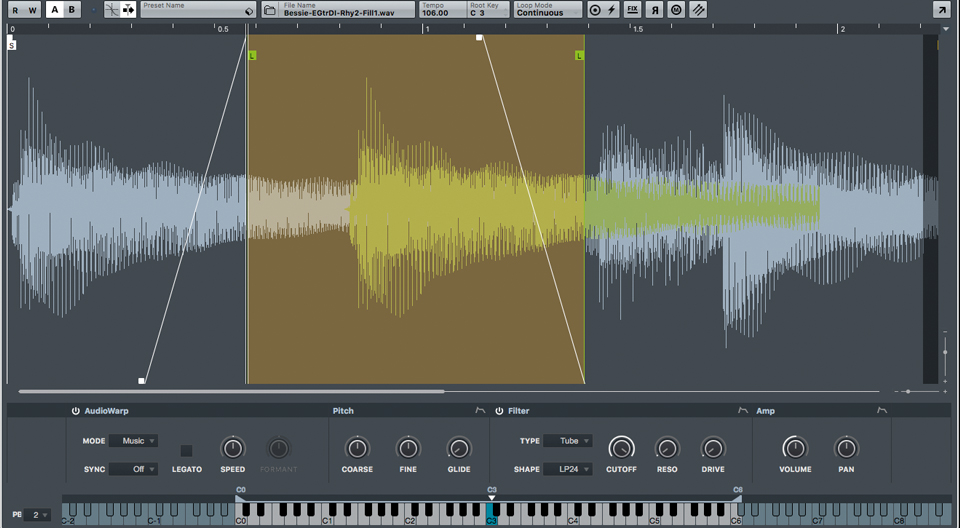New Software Review: Steinberg Cubase 9.5

In Cubase 9.5, Steinberg implements scores of new features, including several crucial user-requested improvements to workflow.
A digital audio workstation is more than just a piece of software for hitting record and adding plugins.
While they are incredibly deep feats of programming (even the simple ones) all that coding under the hood must also translate to providing a logical and inspiring conduit for creating art.
Simply sounding great isn’t enough; the technical features under the hood must be easy and intuitive to use, and reflect the specific needs of all kinds of users.
A few months back, the folks at Steinberg released the latest update for their music production suite Cubase, now at version 9.5. I have been a Steinberg user for over 15 years, and while I initially chose their software for the sound, what has kept me loyal for so long are the features and the incredibly logical workflows it enables.
Not long ago, I reviewed Cubase version 9 right here in these very pages, so let’s dive right into what makes the .5 upgrade worth more than just a passing glance.
Processing
Cubase has sported a 32-bit floating point mix engine for much longer than most of its competitors, and 9.5 ups the ante with a new 64-bit engine, providing double the accuracy in summing and effects processing. This adds a little bit to the processor load (although you can easily switch back to 32-bit in the settings). But those with a robust CPU will find the upgrade very welcome.
It’s not only under the hood where the features have doubled in power; Cubase 9.5 now offers 16 insert slots per track! This is one of 9.5’s feature attractions, and great news for users with elaborate processing chains, where previously, the only option had been to route from a track to a group for more VST effects.
Steinberg has also added flexibility to the pre/post fader effect positioning, as you can now separate pre/post wherever you’d like in your chain simply by moving the green delineation bar. Better still, this is a per-track decision, so it’s easy to have the ideal processing chain for any instrument in your mix.
The processing overhaul doesn’t stop there, as offline processing has also received some major attention. You can now process an audio clip offline with a chain of VST effects, just like you would on a channel in the MixConsole. You can edit any parameters within your chain, as well as reorder or disable effects with the results applied directly to the audio clip, therefore relieving processor load. These are not truly destructive changes however, as each process chain has its own undo history.
Editing
The project window is the center of any production within Cubase, so naturally this has received some upgrades as well. Window zones were added in version 9, and have gained expanded functionality here in 9.5—specifically the right zone. The right zone previously provided access to the VST instrument rack and MediaBay, but the MediaBay now allows full access to your computer’s file browser, making the importing of any files a breeze.
Also, there are now tabs for the Control Room and Master Meters (switchable between peak and loudness). These new tabs, paired with the previously introduced lower zone mixer, make the project window an extremely comprehensive workspace for single monitor users.
One often-requested upgrade is the addition of Bezier curves for automation. Now, you can easily fine-tune your automation with smooth curves by simply grabbing a handle between two automation points and dragging to adjust the amount of curve and steepness. This applies to VCA faders and their corresponding tracks as well.
Also new is the automation range. Create a selection on an automation track and simply drag to edit without having to add additional points. This also scales any automation within the range, making editing quick, easy, and effective.
Another great workflow improvement is the Adapt To Zoom function. If you’re anything like me, you find yourself constantly zooming in and out of the project window during writing, programming, and editing. Adapt To Zoom changes the scale of the grid in relation to your zoom level. This means that when you are zoomed out, the grid snap level is increased to the 1 Bar setting for broader changes. The more you zoom in, the finer the grid resolution becomes, from 1/4 note to 1/8 to 1/16, anticipating your editing needs and letting you focus on the task at hand.
Other Improvements
The click (metronome) has also received a huge upgrade, making it one of the most feature-rich stock metronomes I’ve seen. Any click can “beep” on the beat, but Steinberg has taken a lot of effort to make this a truly musical tool.
Along with providing a selection of sound presets, there are now accent options to take the groove of your click (and therefore your recording!) to the next level. Not only are there multiple accent presets for different time signatures, but Cubase Pro users can utilize the editor’s five different accent levels to fine-tune the click track’s response. This is incredible if you work with odd-time meters; a 7/4 time signature might be much easier to navigate if the click can accent the downbeat and beat 5, or whatever your groove demands.
A few other additions round out the spotlight features of Cubase 9.5. For example, the already-powerful HALion Sonic SE 3 sampler VSTi now includes the Flux Wavetable synth library. Based on 70 wave shapes exclusive to HALion, Flux is an incredibly powerful and deep soft synth, while its 100 presets are perfect for jump-starting your electronic music production.
The Sampler Track received new functionality as well. You can now drag-and-drop MIDI parts to the Sampler Control and Cubase will render the audio automatically, allowing you to manipulate it as you would any other clip. You can also now use the A/B comparison feature found on VST inserts, enabling you to experiment with your sample as much as you’d like without going too far afield.
To Be Critical
I don’t have very much to be critical of regarding the new improvements in Cubase 9.5. Sometimes, software developers release an update that leaves you wondering “Who even asked for this stuff?”, but that is certainly not the case here, and it rarely is with Steinberg.
These were needed improvements; ones that are technical, musical, and well-appreciated. It might be the nerd in me, but even the improvements to the metronome are pretty inspiring for workflow, and anything that can make editing and automating simpler and more musical is always welcome.
However, making improvements on a piece of software as deep and involved as a DAW is no small task, and can occasionally cause problems elsewhere. Cubase 9 introduced one of the biggest updates of recent note: Mixer Undo. But in the course of creating version 9.5, that feature became broken and unreliable.
This has since been corrected with the latest patch (version 9.5.2, which is the version this review is based on), however this fix required a couple months of patience. I do recognize what goes into the design and upkeep of a complex DAW like Cubase, but perhaps for large issues like that, we could get quick hot-fix updates outside of the regular update schedule.
That said, the programming team at Steinberg has indeed come through with subsequent hot-fixes for smaller issues in a more timely manner, so my particular gripe may just be a matter of my impatience. But when you work in a DAW every day and there’s an issue of that size, a couple months is a mighty long time.
Summing it Up
Steinberg has done a great job and shown a lot of insight in their release of Cubase 9.5; by no means did they rest on the laurels of version 9. Improving their project window zones even further, listening to their users by adding automation curves, pushing their already great-sounding audio engine even further with 64-bit processing, and upgrading to a whopping 16 insert slots per track embodies Steinberg’s dedication to their loyal user base.
The upgrade price to Cubase 9.5 is only $60 for previous owners (a full version for new users will cost $560), which is a bargain for all of the added functionality. Steinberg has succeeded in keeping Cubase positioned as one of the finest DAWs available, both sonically and functionally.
Please note: When you buy products through links on this page, we may earn an affiliate commission.







